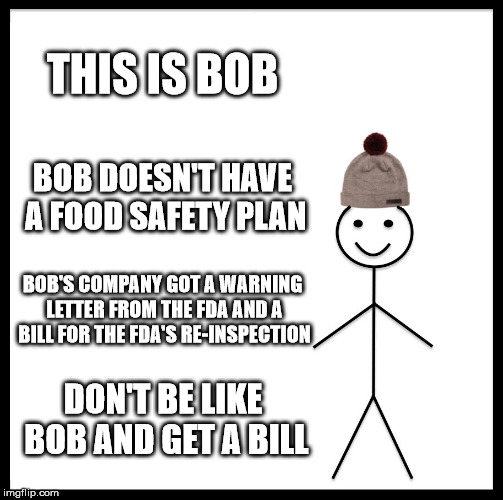
When preparing for FSMA inspections, my checklist will help you, and no one preparation can be said to be more important than another . . . other than, perhaps, records, records, RECORDS. Did I mention records? Did you make a correction? Record it. Train an employee? Record it. Change a process or procedure? Record it. Find a foreign object in the product? That’s right: even if you caught it before any product got out the door, record it.
Oh, wait, there is one more thing. You must have a Food Safety Plan. The FDA, in an effort to make good on their promise to “Educate While We Regulate” will, in many cases, give you a chance to bring yourself into compliance and avoid a Warning Letter — but if you have no Food Safety Plan at all, don’t expect any leniency.
That said, it may also be helpful to learn from those who came before you. Please find below problems found by FDA inspectors in 2018 that resulted in Warning Letters. I will try to keep this list current as data becomes available:
- Rodent feces (this is, hands-down, the number one problem found in inspections)
- Spore-forming bacteria found through swab testing
- Insufficient separation of waste products from finished products
- Bugs, dead or alive, near ingredients or near stored food
- Ingredient packages (usually bags) that are torn or damaged and open to the environment
- Plant walls, floors, ceiling designed in a way that hampers cleaning and repair
- Plant walls, floors, ceiling in poor repair (eg, exposed insulation, damage, failure to use proper lighting or light shields)
- Touching the outside of gloves while donning them
- Failure to review consumer complaints
- Improper monitoring procedures
- Failure to adequately clean and properly store implements and equipment
- In one circumstance, clean and sanitized utensils were placed in pooled water to dry
- In other circumstances, utensils or equipment was marked “cleaned and ready for use” when food residue clearly remained on the equipment
- Salmonella found in environmental swabs
- Water leaks in plant that produces dry product
- Condensation or other liquid dripping onto finished product
- Beetles found inside shrink-wrapped product (animal feed)
- Outside conditions that draw pests, like improperly disposed waste or insecure containers of animal feed
- Lack of pest control records (did I mention “records”?)
- Foot-long dead rat found outside plant (best not to have any dead rats on the premises, but worse when they’re large enough to ride to work)
- Offering an animal for sale for human food, which contains a drug deemed unsafe or levels deemed unsafe
- No Food Safety Plan





